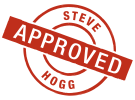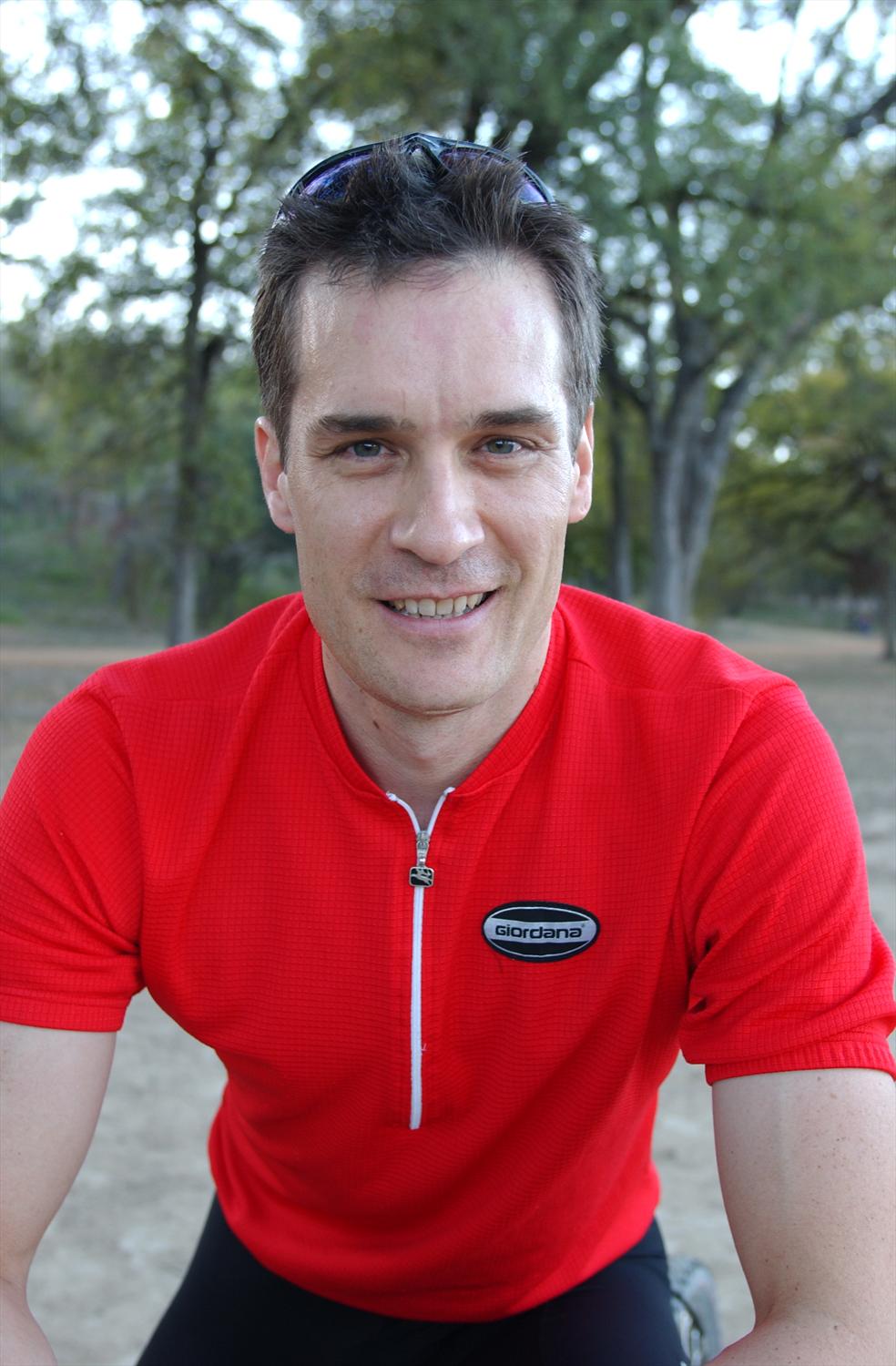Last Updated on June 13, 2023 by stevehoggbikefitting.com
Pelvic Kit Info in more detail than usual
I field a lot of enquiries about the Lateral Pelvic Alignment Kit via email and frankly, it gets boring answering the same 4 or 5 questions over and over again. Several months ago, a Prime subscriber and I had the following interchange where I went into much more than the usual detail in explaining. My cunning plan is that in future, I’ll just cut and paste a link to this post rather than answering permutations of the same questions about the kit repeatedly.
Eye Dominance and Pelvic Tilt
Steve C
G’day Steve,
The problem is not your inability to wink your left eye, as I will explain in a moment. If you wish to learn to wink your left eye, every time you have an idle moment, hold your right eyelid open with one finger and while doing so, blink your left eye. After a week or month or two of practising this, you will be able to wink your left eye while holding the right one open without assistance.
However, that is a unrelated side issue. To explain your issue and the solution to it, some background info is necessary.
When we see, of all of the information transmitted to the brain via the optic nerves, only 50% is used to see with. 50% of the optic nerve fibres connect to the visual cortex, the part of the brain that translates that information into vision. The remaining 50% of optic nerve fibres bypass the visual cortex completely and disappear down the spine into the sympathetic nervous system, which is firstly, the seat of the ‘fight or flight’ response and secondly the seat of most of our unconscious postural control mechanisms, where that 50% of visual input plays a major part in determining our unconscious awareness of our orientation in space. I call this the Non Seeing, Spacial Awareness Component of Vision (NSSACV). So far, so text book as any Behavioural Optometrist will confirm.
However, while I’ve researched this matter extensively using just about every publicly available and many subscription only resources (PubMed etc), I’ve never been able to find any specific reference to where NSSACV ends up; only general references to the sympathetic nervous system. It took me quite a while to realise that this is almost certainly, not an inability to find where NSSACV ends up, but more likely due to no researcher ever being interested enough or able to gain enough funding to find out. So for my own purposes I decided to work it out.
Proprioception is the name given to our unconscious awareness of our position in space. Every second several billion signals are generated by the peripheral nervous system (PNS) and conveyed to the central nervous system (CNS = spine and brain) alerting it to the load being experienced, position in space and relationship to gravity of all constituent parts of the body. This information is used by the brain’s movement integration centre, the cerebellum, as the input for optimal motor patterns (muscle firing sequences) for the efficient performance of voluntary and involuntary movements and is generated by hundreds of millions of sensory nerves distributed throughout the body named Proprioceptors. They are not distributed evenly.
Fully 50% are located in the upper and lower jaws and the masticatory (chewing) musculature. I find this easy to understand in an evolutionary sense because aeons ago, before the development of arms, legs or even fins, evolutionary pressures dictated that it was sensible to locate plenty of sensory apparatus in or adjacent to the feeding apparatus. As an aside, this is why I’m always interested in a fit client’s lower jaw alignment, as given that 50% of the proprioceptive input is generated from here, and it is rare to find a perfectly aligned lower jaw, for some this can be a major issue. Luckily, most are more or less asymptomatic.
Another 25 – 30 % of proprioceptors are located in or around the 2 sacroiliac joints (SIJ’s), 2 small joints that don’t have a lot of movement and that separate the spine from either side of the sacrum, the bony lump of fused vertebrae at the base of the spine. The basic function of the SIJ’s is to allow the transmission of loads between the torso and legs in either direction without damaging our hips in the process. The remaining 20 – 25% of proprioceptors are distributed through every bone, muscle, tendon, ligament, fascia etc.
The question that immediately occurred to me is ‘Why are the SIJ’s so important that they have a greater number of proprioceptors than the rest of the body below the skull put together?’.
Evolution isn’t wasteful so they must be doing something REALLY important. More important than the description of their function I gave above. What I’m about to say I cannot prove to the level required for scientific evidence because firstly, I don’t care enough to bother and secondly, I don’t have the resources. What I can do is demonstrate the effect empirically and have done so thousands of times, including to many hundreds of health professionals, at least half a dozen of which were professor in various medical specialties.
The NSSACV ends up at the sacroiliac joints. Right eye communicates with right SIJ in the main and left eye with left SIJ in the main, though there is some overlap. This information exchange between eyes and SIJ’s is a loop and the source of our sense of pelvic horizontality.
Physios, chiros and osteos generally believe that lateral pelvic tilts like the one you display, are caused by muscle imbalances which is total bullshit! The muscle imbalances associated with any long term pelvic tilt are the product of the obliqity, NOT the cause. The true cause is poor processing of the NSSACV. Which is why you’ve been unable to fix your lateral pelvic tilt and associated functional LLD despite 30 years of trying!
What happens is this – Every challenge to one’s position in space is met by an immediate and unconscious compensatory response from the CNS, all of which involve an increase in asymmetry and many of which involve a shift in lateral pelvic alignment. A ‘challenge’ in this sense can be literally anything; a disease, injury, fracture, dislocation, heavy blow or impact, allergic response and much, much more. A shift in lateral pelvic alignment compromises the function of one SIJ more than the other which in turn compromises the feedback loop between the affected SIJ and the eye on the same side. After a period, the feedback loop breaks down on that side, embedding the pelvic asymmetry.
This why covering your left eye improved matters so much; you were blotting out the corrupted left side NSSACV input to this feedback loop, leaving only the uncorrupted right side feedback loop which works well enough, because as I mentioned above, there is some overlap between sides.
No you don’t have to ride with an eyepatch for the rest of your life. There is a product in the store called the Pelvic Alignment Kit which will sort you out both on and off the bike in a couple of minutes if you follow the instructions exactly. It is an information download and is sold on an unqualified money back if not happy basis. Given you’ve had this issue for 30 years, I’d suggest daily use for a month, then 3 times weekly after that. This is not onerous as it only takes 5 minutes or less for a helper to perform the procedure on you.
Assuming you get the Kit, if you run into any problems of have any further questions arising from it’s use, just add a comment to this thread. Also, as you will be functioning more symmetrically, you may need to revisit your wedging numbers and placement, though I cannot be certain of that.
Note: Often, more specific answers to your questions can be found in the Comments below or in the eBooks section and FAQ page.
To learn more about bike fit products offered by Steve, click here.
Do you have a bike fit success story? Please go here to share.
Thank you for reading, return to the Blog page here or please comment below.






Dear Steve,
Thanks for your quick and comprehensive response to my questions. After some critical reflection (and a leap of faith based on your longstanding reputation as the most competent bike fitting professional on the planet), I ultimately purchased your pelvic alignment kit. I have been using the protocol daily for the past two weeks, and I want to provide some positive feedback to you and, perhaps more importantly, to the many people on this forum.
To be honest, I was initially skeptical. I understood that our bodies function through a complex series of chemical-electrical impulses, and I could even accept that corruptions in our processing of those impulses could negatively affect our unconscious orientation in space. What I had difficulty believing was that the use of magnets could reset our brain’s processing of those impulses in such a way as to realign decades-long skeletal imbalances. Nevertheless, I proceeded with an open mind.
Here is what happened:
On day one, my wife used your procedure to identify my left and right iliac crests. The left crest was roughly one centimeter higher than the right. This finding was consistent with what a chiropractor had found years ago when using x-rays to diagnose a functionally shorter left leg. My wife then used the magnets as outlined in your protocol, after which she immediately reassessed the iliac crests. The result: they were nearly dead even. We both were surprised, and so I performed the next test. I got on my bike. I felt balanced and powerful as I cycled through a workout on Zwift.
But I wasn’t yet convinced. I have made adjustments and experienced treatments too many times in the past to believe that an initial feeling of balance would be sustained over multiple days and multiple miles. And so, I continued to perform the pelvic alignment protocol, and I continued to ride.
Two weeks later, my iliac crests continue to be even. I have also, as you foresaw, needed to make some changes in my set-up on the bike. Those include the following:
• Lowering my saddle by two millimeters and moving it back slightly
• Reducing from three to zero the wedges under my right cleat (this was huge!) and adding two heal
wedges (Varus) for a total of three in my right shoe.
• Eliminating the single heal wedge (Valgus) in my left shoe
• Centering the lateral alignment of my cleats instead of adjusting them so my right foot was farther
from the crankarm and my left foot was closer to the crankarm
I am thrilled with the adjustments I have been able to make and will continue to ride regularly and easily as my body adapts to the alignment of my pelvis.
In terms of body adaptation, one interesting outcome has been soreness in my left hamstring following each ride. Forty years ago I had an ACL reconstruction in my left knee for which the semitendinosus was harvested from the left hamstring. In decades as a cyclist, I have always struggled to recruit the left hamstring. I wonder now whether the ACL reconstruction contributed to the pelvic tilt and my functional LLD. My current theory is that your pelvic alignment protocol has properly positioned my left leg so that the hamstring (and perhaps other muscles in the leg) can be more fully used. I would welcome your thoughts on this theory and on any other feedback I provided.
With sincere appreciation,
Steve C
P.S. I am still working on how to wink the left eye!
G’day Steve,
I think scepticism; open minded scepticism, is a good thing generally and am happy that your leap of faith got you the result you were seeking. Re your theory linking your left knee ACL reco to the long term pelvic tilt, I can only speculate. Maybe yes, maybe no. I’ll explain my experience.
I’ve had more injuries than most. Without belabouring the point, I’m talking 50+ fractures, multiple dislocations, a right foot and ankle, left knee, right sacroiliac joint, both shoulders and jaw that don’t work as they’re supposed to. By 25 years of age, I was in constant pain and achieved only modest results from the manual health professions. Around that time I had crush fractures of 12 vertebra and found that an effective solution to that discomfort was maintaining, good upright posture.
With that background I took more interest in the postural development of my children than most parents do and quickly noted that everytime they contracted a virus, once they were old enough to walk, there would be a shift in lateral pelvic alignment. Around 50% of the time, the pelvis would fall back to proper alignment over the ensuing 6 – 8 weeks and 50% of the time it would not and I would take them to a chiropractor who specialised in children, for a fix.
That’s nearly 30 years ago and my knowledge base has increased a lot in that time, particularly in how to manage and influence the proprioceptive response, as this has been an interest of mine for many years. Which leads me what follows, which is a cut and paste from a book that I’m attempting to write at the moment..
Section 1: BASIC PREMISE
1.1. I believe that most non-structural biomechanical issues; aches, pains, muscle hypertonicity and hypotonicity, significant differences in joint range of motion between each side, pelvic obliquities, many common postural distortions and more, are caused by unconscious compensatory responses to communication problems between the peripheral nervous system (PNS) and central nervous system (CNS). In essence while many consider these and related issues as biomechanical problems, which they are, the root causes are the self-protective, unconscious compensatory responses caused by poor communication between the peripheral and central nervous systems. In many cases these issues can be quickly resolved by restoring clarity of communication.
1.2. These breakdowns or more properly, proprioceptive (unconscious awareness) deficits, occur throughout our lives and are triggered by viruses, diseases, allergic reactions, heavy blows or impacts, fractures, surgeries, joint dislocations, repetitive strains, chronic poor posture and much more. Unfortunately, we don’t possess a natural ‘reset mechanism’ to restore these sensory deficits as there has been no evolutionary pressure to develop one. This requires further explanation.
1.3. Every second the peripheral nervous system (PNS) generates vast amounts of proprioceptive information about the load being experienced, relationship to gravity and position in space of all parts of the body and conveys this information indirectly to the cerebellum, the movement integration centre of the brain. The cerebellum does not initiate movement; rather it integrates this influx of information from the body and other parts of the brain, then fine tunes motor patterns (muscle firing sequences) for the efficient performance of voluntary and involuntary movements and postures. We call this process Proprioception and I’ve lost count of the number of times I’ve been told by health professionals that proprioception “……just happens…….”, with the implication being that there is little that can be done to influence the process. Proprioception doesn’t “just happen” and to an extent well beyond what is generally believed; the process can be influenced and managed for a level of benefit for those experiencing pain, discomfort or unilateral range of motion issues.
Explanatory Note 1:
For a fuller explanation of proprioception, see Section 8: What Is Proprioception?
1.4. The 3 billion or so proprioceptive signals that are generated by the PNS and conveyed to the CNS every second, is 1.5 million times greater than our capacity to process around 2 thousand signals per second. This apparent paucity of processing capacity is not a flaw but a necessity. If the CNS gave equal unconscious weighting to all proprioceptive stimuli, we would not be able to prioritise or rank them in order of importance and likely be overwhelmed by sheer volume of stimuli and so, be unable to move efficiently.
1.5. Evolutionary pressures have dictated a hierarchy of priorities as to what information is prioritised for processing versus the vastly greater amount that is routinely ignored. Only 2 categories of stimuli are prioritised for processing; any Change in the quality of stimuli being received and the exertion of Force. The prioritising of both Change and Force has clear survival value, so this is no surprise.
I will expand on this in the section Postural Fatigue Test
So why has there been no evolutionary pressure to develop a ‘reset mechanism?
1.6. As an example, let’s posit that by age 30, and because of injuries, blows, repetitive poor postures, surgeries, allergies and more, something like 20% of a person’s proprioceptive responses are not being communicated clearly. The central nervous system doesn’t ‘care’ about this, as instead of dealing with 1.5 million times too much information, as it would be doing if the peripheral and central nervous systems were communicating perfectly, it would, in this example, still have to deal with 1.2 million times too much sensory information; and the affected person can still eat, breathe and procreate, which is all that is necessary to pass on one’s genes. So, in an evolutionary sense, there has been no pressure to develop a mechanism that restores communication dropouts or deficits.
Each deficit or partial dropout causes an immediate and unconscious compensatory response and it is these compensatory responses that are the direct or indirect causes of pain and discomfort as Section 2 explains.
Section 2: THE CHALLENGE / COMPENSATORY RESPONSE MODEL
2.1. A Challenge to one’s position in space is any factor that creates a need for an unconscious Compensatory Response. The list of potential Challenges is near infinite. They include structural differences in limb length, chronic sub optimal posture, injuries above an individually variable threshold, wounds, surgeries, pelvic obliquity or anterior / posterior rotations, accidents of birth or development, repetitive strains, diseases, viruses, allergies, digestive upsets, inefficient breathing patterns and more. They also include less than optimal physical relationships with various apparatus such as bicycles.
2.2. A Compensatory Response is any unconscious measure that the CNS adopts in an effort to minimise the impact of a Challenge.
2.3. The human central nervous system is incredibly adept at compensating for a wide range of Challenges but all compensations exact a cost at some level. There are 5 major costs associated with any given suite of Compensatory Responses.
• Compensatory Responses do not solve problems, though they often appear to do so in the short term. Compensatory Responses work by shifting the load elsewhere. This is accomplished by subtle and occasionally, not so subtle unconscious changes in the posture and alignment of the body. Chronic issues occur when the CNS has exhausted the possibility of further shifting the load. This means that often the area of chronic discomfort is not the problem, but merely where the compensatory cost has ended up.
• The CNS has no long-term predictive foresight. What it is good at is ‘solving’ the immediate problem. A Challenge is a stimulus to adapt with the issue being that the immediate adaptive ‘solution’ will often cause more extensive issues at an indeterminate and highly variable later date.
• All Compensatory Responses increase the differences between left and right-side function. Almost no one compensates symmetrically. A simple example will suffice. We have a subject with a 10 mm difference in structural leg length. They will not stand with the iliac crest of the longer legged side 10 mm higher as one might reasonably expect. Typically, they will stand so that the iliac crest of the long-legged side is 20 – 30 mm higher. Atypically, they may even stand with the iliac crest of the shorter legged side higher.
• Each Compensatory Response is yet a further Challenge to one’s position in space. This leads to compensatory cascades of: compensation / sub – compensation / sub-sub compensation / sub-sub-sub compensation………… and so on; near ad infinitum. All of which have been triggered by the original Challenge / Compensatory Response. All Challenges and Compensatory Responses cause communication issues between PNS and CNS. If the CNS doesn’t have full clarity of awareness of an area of the body, the typical compensatory response is to tighten tissue around the area in deficit in a blind, self-protective attempt to limit range of motion. This may in turn, cause laxity in other muscles.
• Lastly, while the body does what the CNS instructs it to do, the CNS learns what the body does. Which means that if someone is compensating for a challenge or suite of challenges for long enough, all of the compensatory asymmetries of function that are the CNS’s responses to that suite of challenges become the new ‘normal’, and become embedded into our postures and movements.
2.4. It is important to repeat that Compensatory Responses have hierarchies, so it follows that in many cases the entire cascade can be eliminated by tracking down and resolving the root cause Challenge / Compensatory Response that triggered the cascade. All of this may seem complex but conceptually, is simple. If full communication between an area of the body in deficit and the CNS can be restored, then the need to compensate is removed and it is the need to compensate for a challenge which is the nub of many otherwise tough to resolve problems.
2.5. To do this, we need a means with which to identify communication deficits and an efficient model within which to work to restore full communication. This will be the focus of the next 2 sections.
What this means in your case Steve, is that like everyone else, you were riddled with deficits of which your left semitendinosus was one. Whether it was the cause of your pelvic obliqity or not is impossible to say. I can’t remember the last time I had a first time client who did not have a misaligned pelvis. I use muscle testing to determine the root cause of the proprioceptive deficits client’s display and low velocity mobilisation to restore them. This is not something that can be learned quickly, so the Pelvic Kit is what I give to clients post fitting, to maintain themselves after our session is over.
It works a treat, as you have found and I thank you for taking the time to pass on your experience.